Salmon Fried Rice
Ingredients
- 2 salmon fillets skin-on, approx. 75g per fillet
- ½ tsp salt to draw out moisture and fishy odors
- 3 fresh shiitake mushrooms thinly sliced
- 1 tbsp ginger root finely diced
- 2 tbsp Japanese leek (naganegi) white part, finely diced
- ¼ tsp smoked paprika powder
- 1 tsp dashi granules
- ½ tsp Chinese-style chicken bouillon powder
- 1 tsp unsalted butter
- ¼ tsp sugar
- 1 tsp cornstarch or potato starch
- 350 g cooked Japanese short-grain rice refrigerated overnight
- 1 tbsp cooking oil neutral flavored, like vegetable, canola, or rice bran
- 2 eggs
- 1 tsp Japanese soy sauce (koikuchi shoyu)
- salt to taste
- ground white pepper to taste
- ¼ tsp lemon juice
- ½ tsp toasted sesame oil
- toasted white sesame seeds topping
- Japanese wild parsley (mitsuba) topping, or chopped shiso leaves or green onions
Instructions
- Cut 2 salmon fillets into bitesize pieces and sprinkle with ½ tsp salt. Leave to rest for 10 minutes.
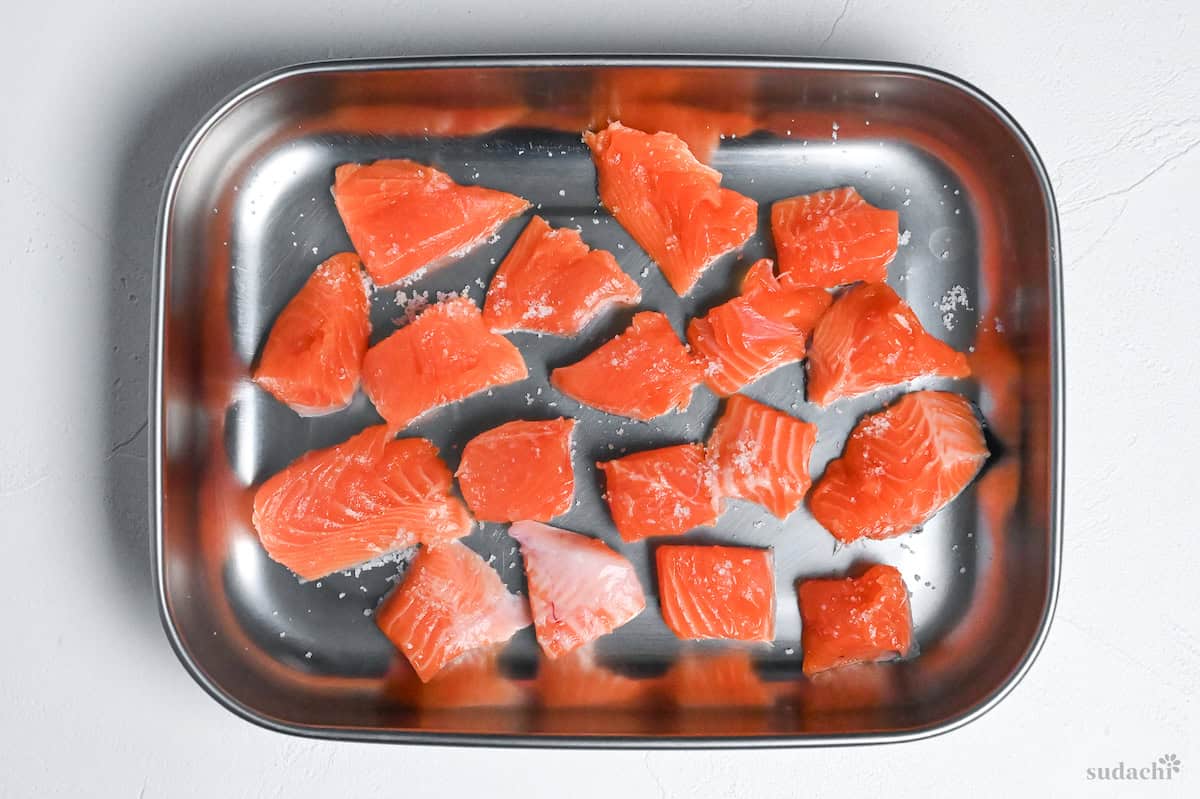
- While you wait, take 3 small bowls. Thinly slice 3 fresh shiitake mushrooms and finely dice 1 tbsp ginger root, and place them together in one bowl. In another bowl, add ¼ tsp smoked paprika powder, 1 tsp dashi granules, ½ tsp Chinese-style chicken bouillon powder and 2 tbsp Japanese leek (naganegi) finely chopped. In the final bowl, add 1 tsp unsalted butter and ¼ tsp sugar. Set all of the bowls by the stove for later.
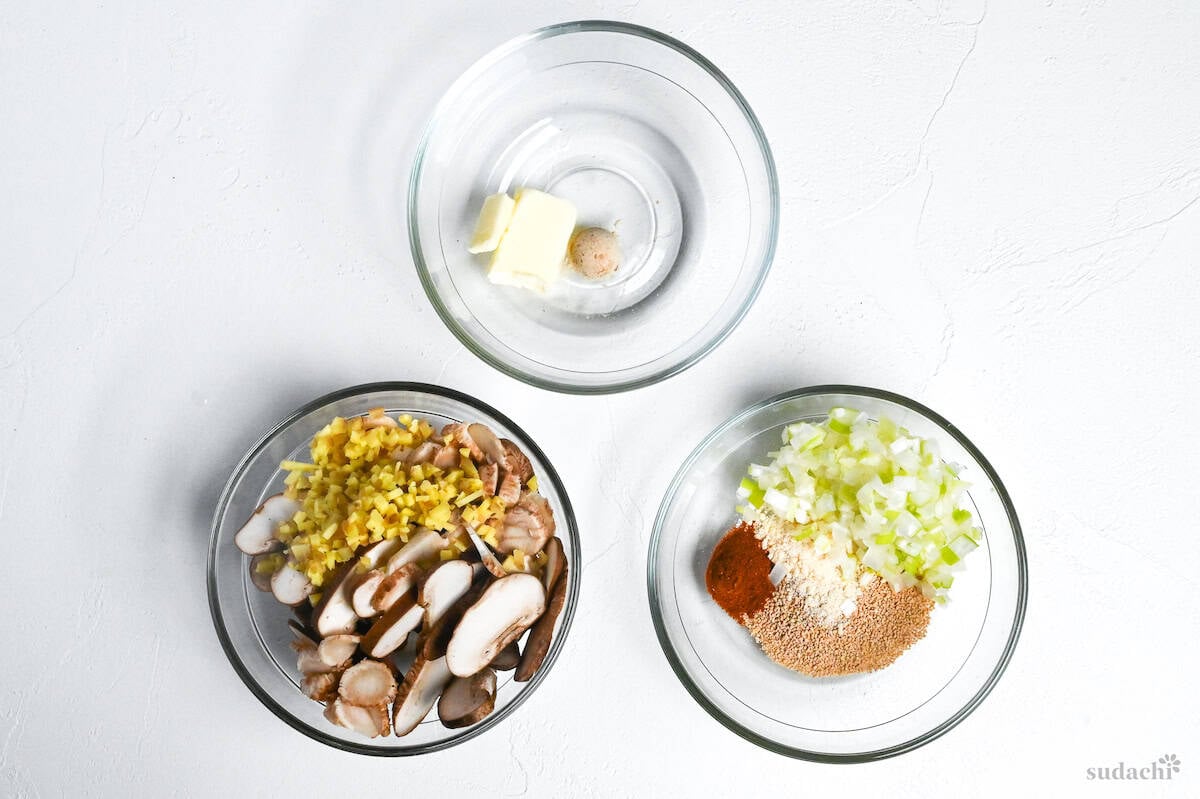
- After 10 minutes, pat the salmon pieces dry with kitchen paper and sprinkle with 1 tsp cornstarch. Mix until every piece has a thin even layer of starch.
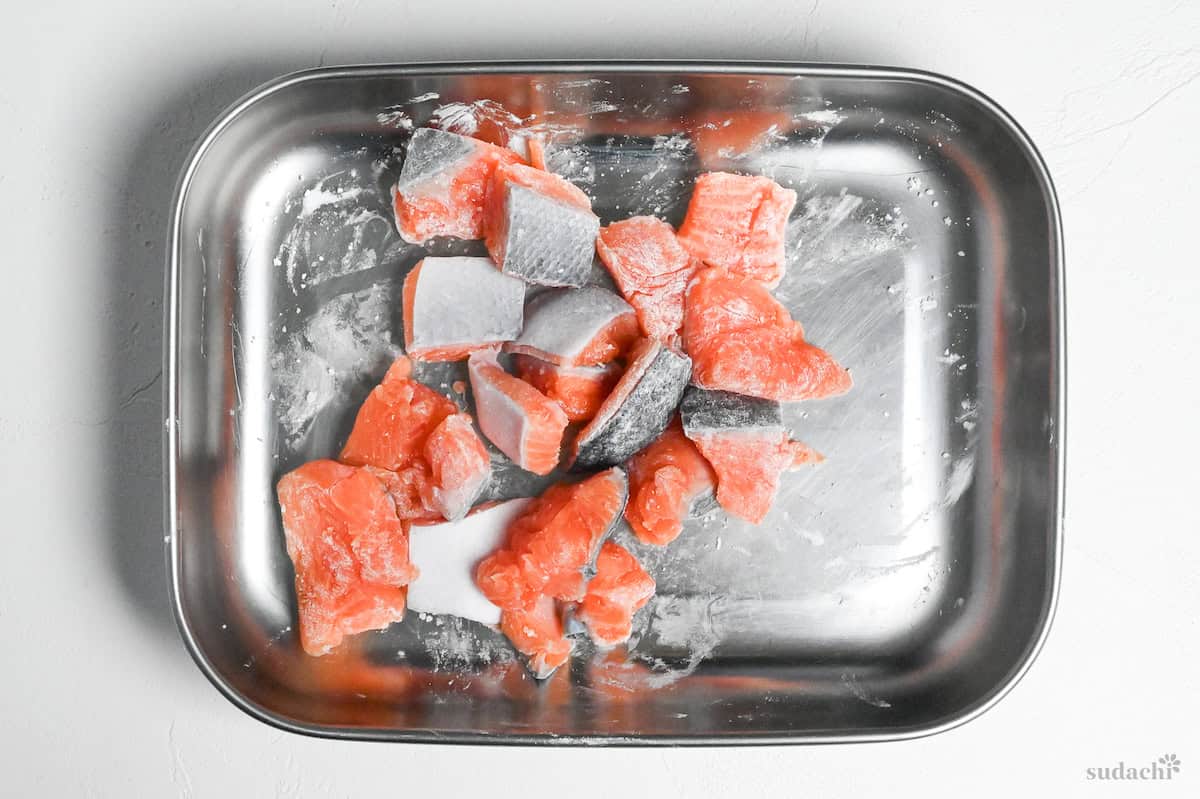
- Heat a wok on medium-low and add 1 tbsp cooking oil (or lard). Once hot, add the salmon, mushroom and ginger. Fry until the salmon is cooked on the outside and the mushrooms are slightly softened.
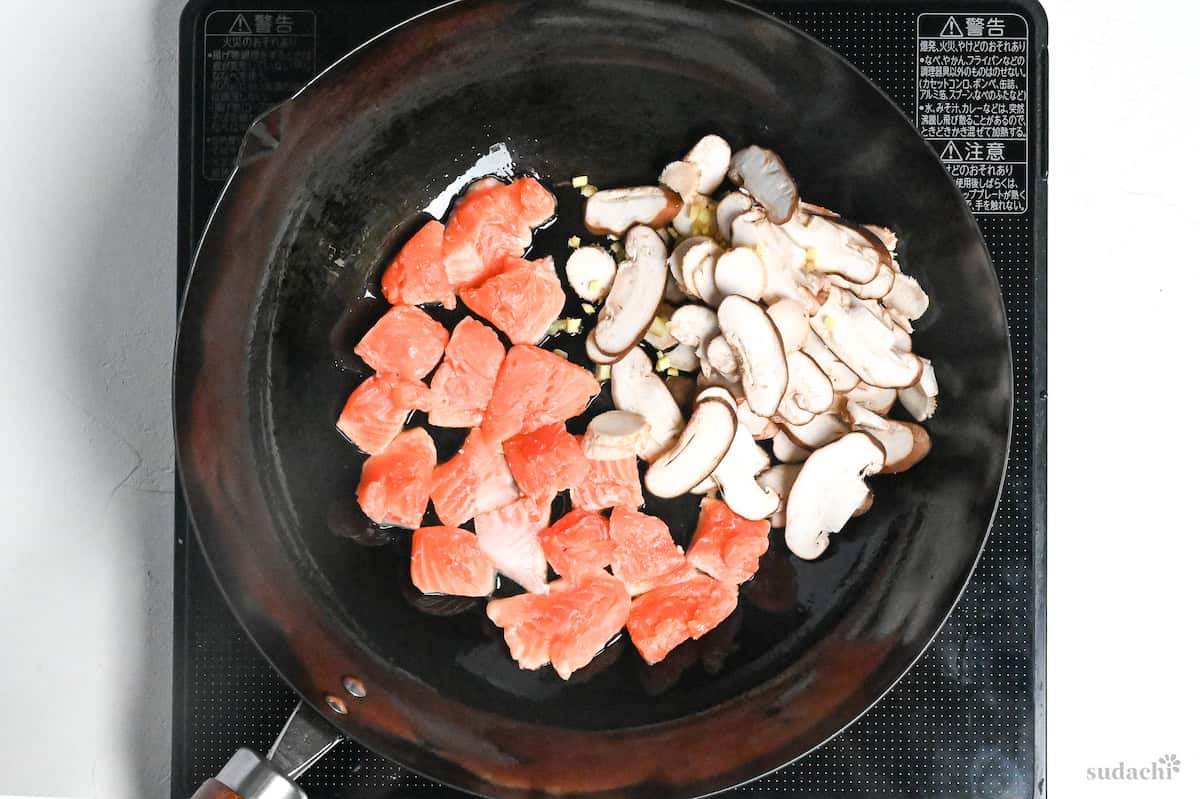
- Push everything to one side of the wok, and increase the heat to high. In the empty space, crack 2 eggs and mix to scramble until half-cooked.
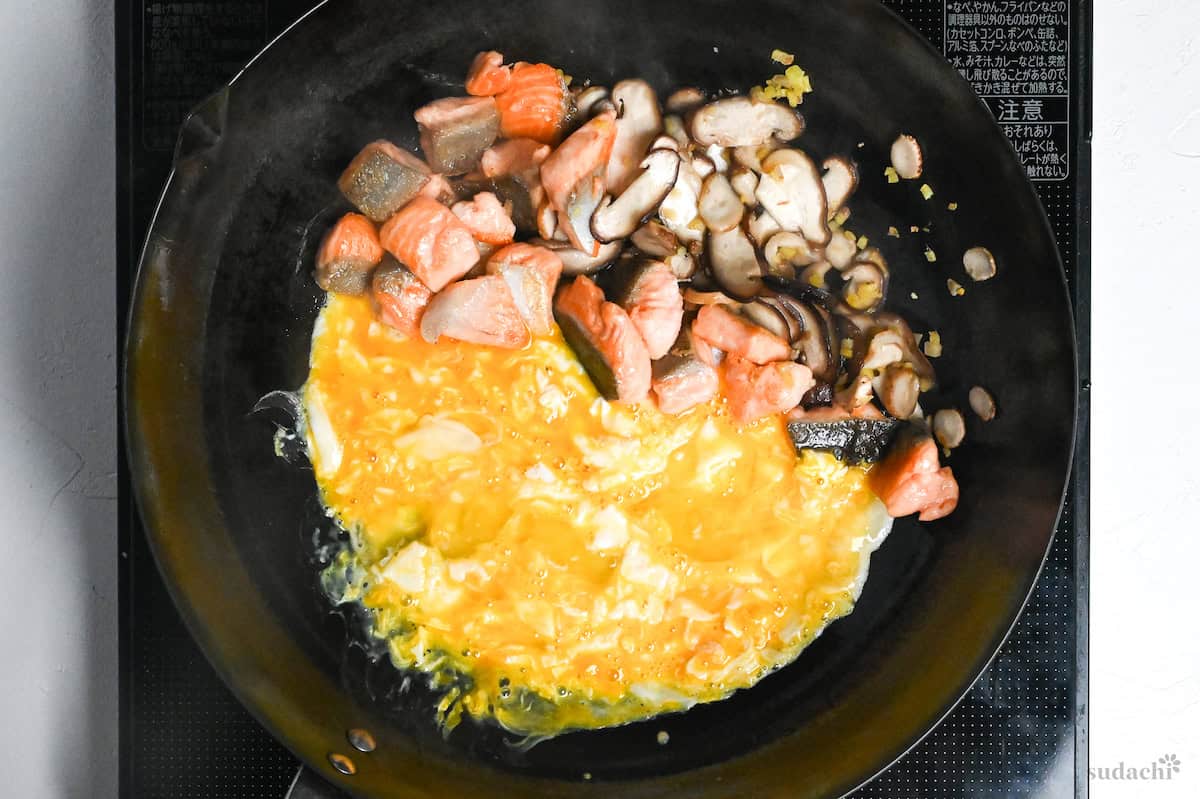
- Add 350 g cooked Japanese short-grain rice and contents of the bowl with Japanese leek, dashi, chicken bouillon, and paprika powder. Mix thoroughly.
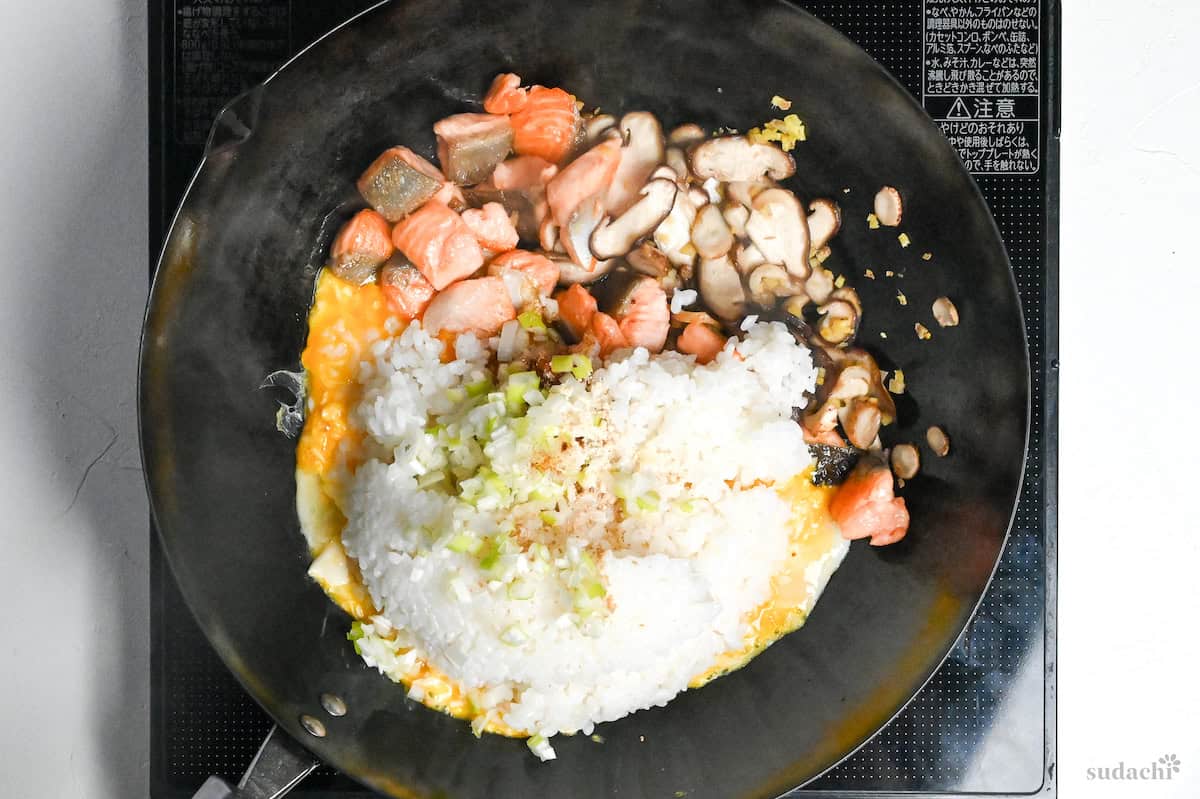
- Pour 1 tsp Japanese soy sauce (koikuchi shoyu) around the edges of the wok and toss the rice a few times.
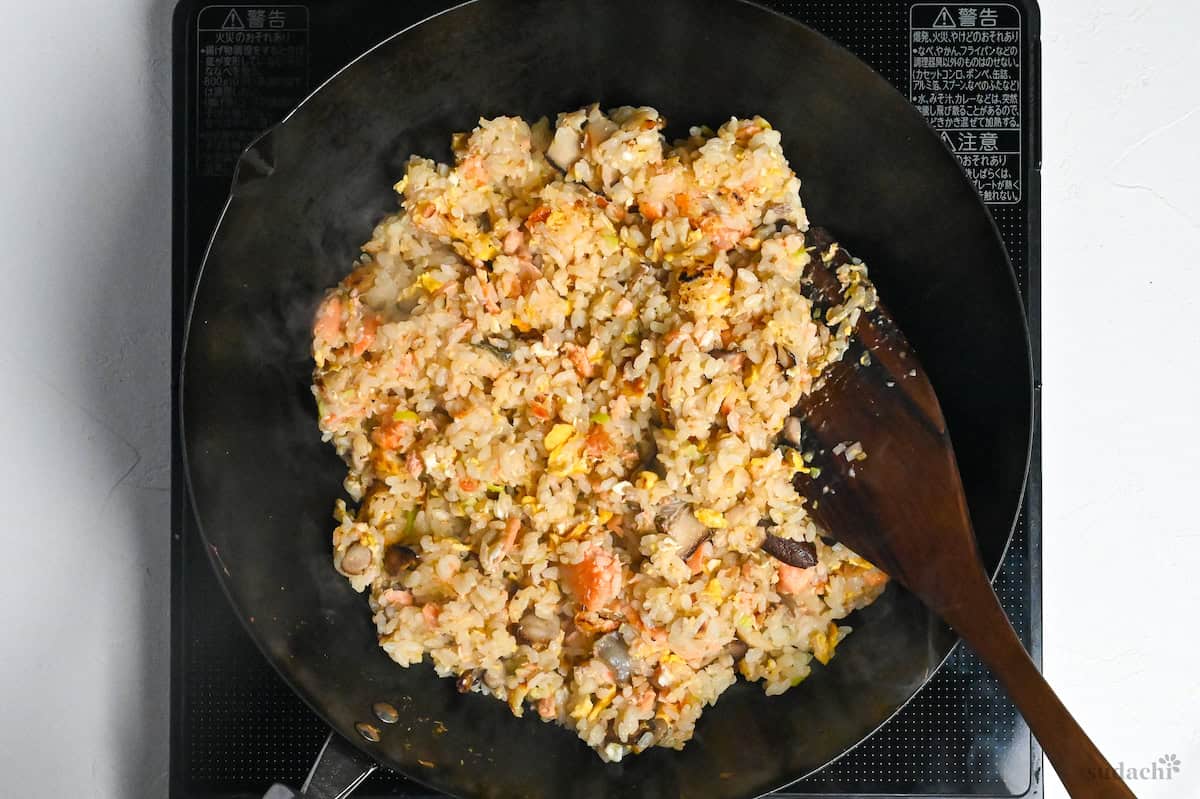
- Add the butter and sugar along with salt and ground white pepper to taste. Mix well, then add ¼ tsp lemon juice and ½ tsp toasted sesame oil before mixing once more.
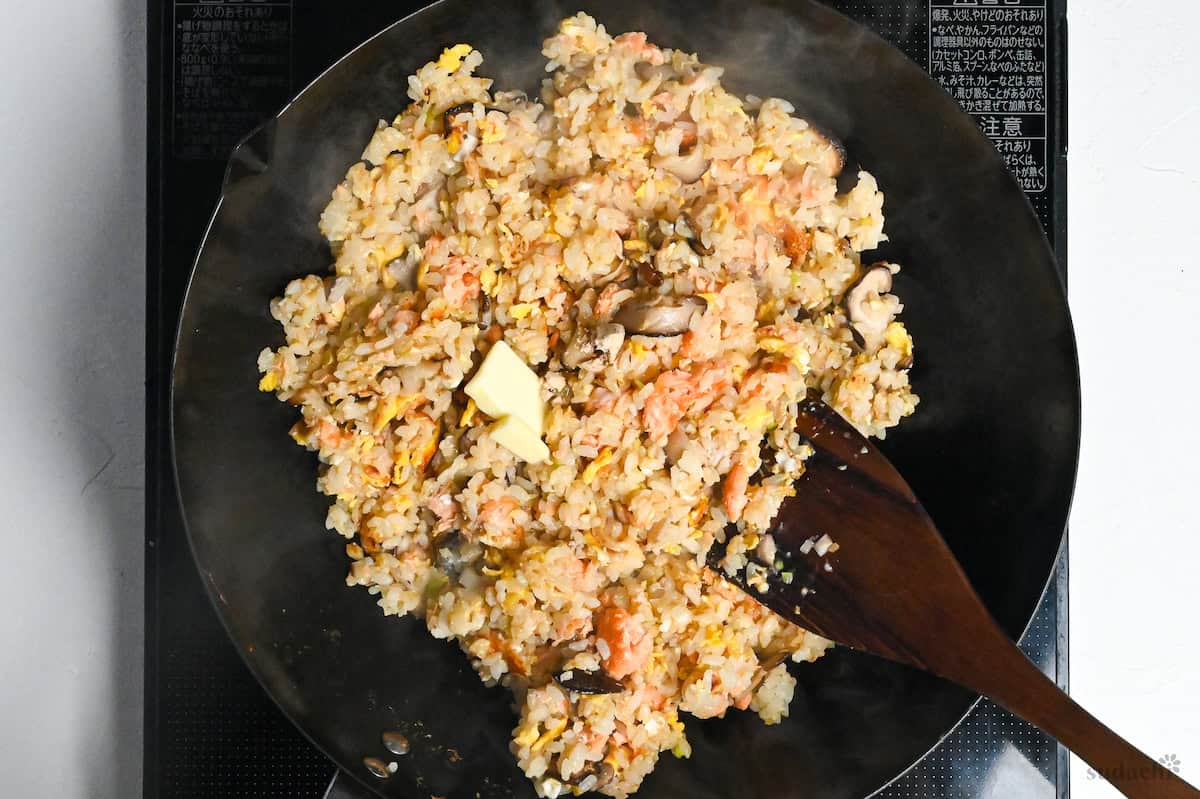
- Divide between serving dishes and garnish with toasted white sesame seeds and Japanese wild parsley (mitsuba) or chopped green onions. Enjoy!
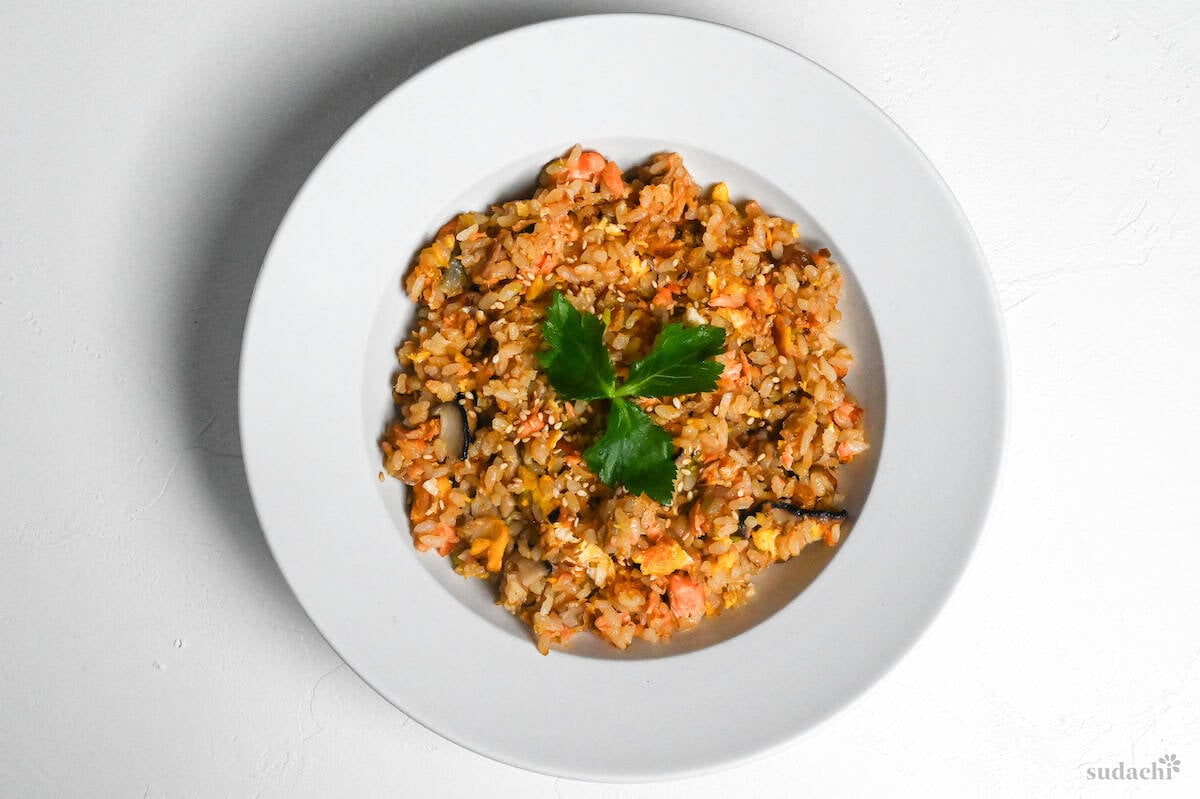
Notes
- For detailed instructions on how to cook Japanese rice, please refer to my guide.
- You can substitute salted salmon for fresh salmon. However, remember that it's already quite salty, so significantly reduce other seasonings if using it. Also, skip the salt-curing step when using salted salmon.
- Leftover grilled salmon or salmon flakes also work well as time-saving alternatives. If using these pre-cooked options, skip the salmon cooking step entirely and adjust seasonings downward to prevent excess saltiness.
- Prep all ingredients before heating the wok, as the cooking process moves quickly once started and prevents overcooking any components.
- Store leftovers in airtight containers in the refrigerator after cooling completely and consume within 1-2 days.
- When reheating leftovers, use a frying pan with a small amount of oil rather than a microwave to best restore the original texture and flavor.
- Serving ideas: Authentic miso soup, Pickled cucumber, Ohitashi salad, Sunomono salad.